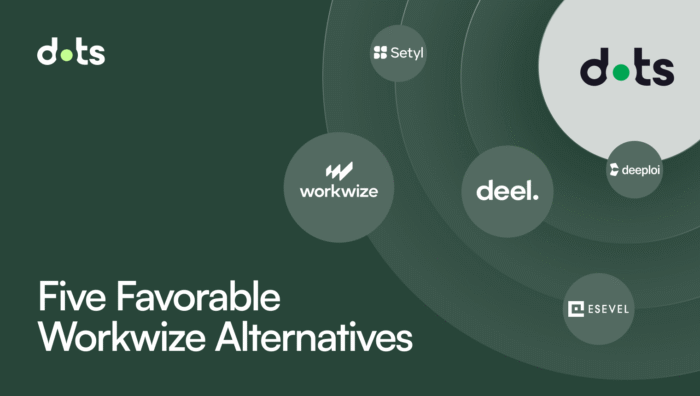Have you ever wondered how important IT procurement is to a business? While it’s true that hardware and software help those businesses run, it goes beyond having the tools for the trade.
Worldwide IT spending is predicted to grow 6.8% in 2024 to reach $5 million. But while companies continue to spend on IT infrastructure, whether they’re nailing the IT procurement process is another story. Proper procurement processes come with a variety of benefits, maximizing your dollars spent and equipping your employees with the right tech.
In this guide, we’ll be breaking down the basics of IT procurement, looking at why your business needs it and which parties are responsible for it. We’ll also go over some best practices and how to streamline the process with software.
IT Procurement Basics
IT procurement does sound almost exactly like what it describes – it’s an essential process that supports any modern business, making sure they have the technology needed to conduct operations. Beyond getting the actual technology, the process is a lot more involved, coordinating an entire system that we’ll learn more about in the following sections.
What It Is
IT procurement is all about sourcing and securing the best tech tools and systems that a business needs to operate. Whether it’s buying hardware such as computers or headsets or software like Microsoft 365, it also involves making sure that these items are relevant and worthy of procuring.
Does it align with the company’s goals right now? Will it support the long-term goals? Is it the best tool for the job? These tools need to prove useful to the business and be able to provide a return on investment in terms of efficiency or financial performance.
Why You Need It
But why not just do some brainstorming, come to a consensus on what you need and then purchase it? Having a proper strategy in place means reaping a range of benefits relating to risk management and cost.
- For Cost-Effectiveness: Being strategic about IT purchasing means balancing the costs of buying new tech. Instead of just allocating a certain amount of money to IT in general, evaluating what your business really needs first can stop you from overspending and using your potentially limited funds for the essentials.
- To Gain a Technological Edge: The business world is becoming increasingly reliant on digital operations, and having a plan in place to leverage the latest tech can give you a leg up over your competitors.
- For Risk Management Purposes: Purchases in tech can be risky, especially when it comes to security, compatibility issues, and even obsolescence. Through a well-crafted procurement process, you’ll make certain that your IT solutions work with your existing ecosystem.
- To Stay Scalable: Your business is bound to grow and evolve, and with that comes changes in technology needs. Can the solution scale and adapt along with your business? An IT procurement strategy will help you consider what investments to make, considering the present and future needs of your company.
Who Handles It
So, who does the responsibility fall on? Most organizations share the responsibility of IT procurement among different departments, but the job is ultimately coordinated and conducted by a specific IT purchasing manager or team.
IT managers might make the main decisions on what hardware, software, and systems would benefit the company and whether it would integrate with their current infrastructure. Financial teams could then handle budget planning, and other teams that will end up using the software could give their opinions about what would be most useful.
Once all these decisions are made, the procurement manager develops a final purchasing strategy and manages all procurement processes with an external vendor.
Best Practices: Manual vs. Automated Approaches
Mastering IT procurement is all about picking the right strategies. These will work to align your business technology with your business goals. There are two general approaches to the procurement process: doing things manually and opting for software.
Doing It Manually
The manual way is a lot more hands-on, where each step of the process will require direct attention. This traditional approach might be more taxing, requiring more time and resources, but it can result in personalized and detailed results. Some best practices for manual procurement include:
- Have Approval Processes in Place: With the manual method, a structured approval process is essential to make sure purchases are reviewed and authorized by the right stakeholders.
- Have Robust and Organized Documentation: Keeping an organized documentation system will make it easier to track all procurement activities for easier auditing and referencing.
- Make Vendor Comparisons: Comparing vendors on pricing, service quality, and product reliability means always keeping your eye out for products with a return on investment. After all, with products popping up left, right, and center, you’ll want to take advantage of the best ones.
Streamlining with Software
When you embrace software solutions for IT hardware procurement, you open doors to a much more efficient process compared to manual methods.
- Automate Routine Tasks: Procurement software can automate all those tedious tasks that take up the bulk of manual processes. Rather than spend time processing orders and invoicing, software can do all of that for you while reducing the chances of human error.
- Centralize Data Management: With all your data consolidated in one place, all stakeholders will have access to the same consistent information in real-time. That means inventory, expenses, and more can be viewed at any time, and the procurement process can become streamlined among departments.
- Improve Reporting Capabilities: While you’ll need an expert to analyze your spending patterns and other aspects of procurement, the software comes with built-in reporting features to get a comprehensive overview of your procurement strategies and whether there’s room for improvement.
Introducing Dots
Dots is an end-to-end cloud-based solution built for IT asset management. With this industry-leading asset-tracking software, businesses can simplify and optimize the entire lifecycle of IT procurement and management. You can source and view your IT assets and where they’re being used, as well as handle on/offboarding on one platform, eliminating the headaches that come with manual processes.
Book a demo with Dots today and transition from time-consuming paper trails to a modern, efficient IT asset management system.





